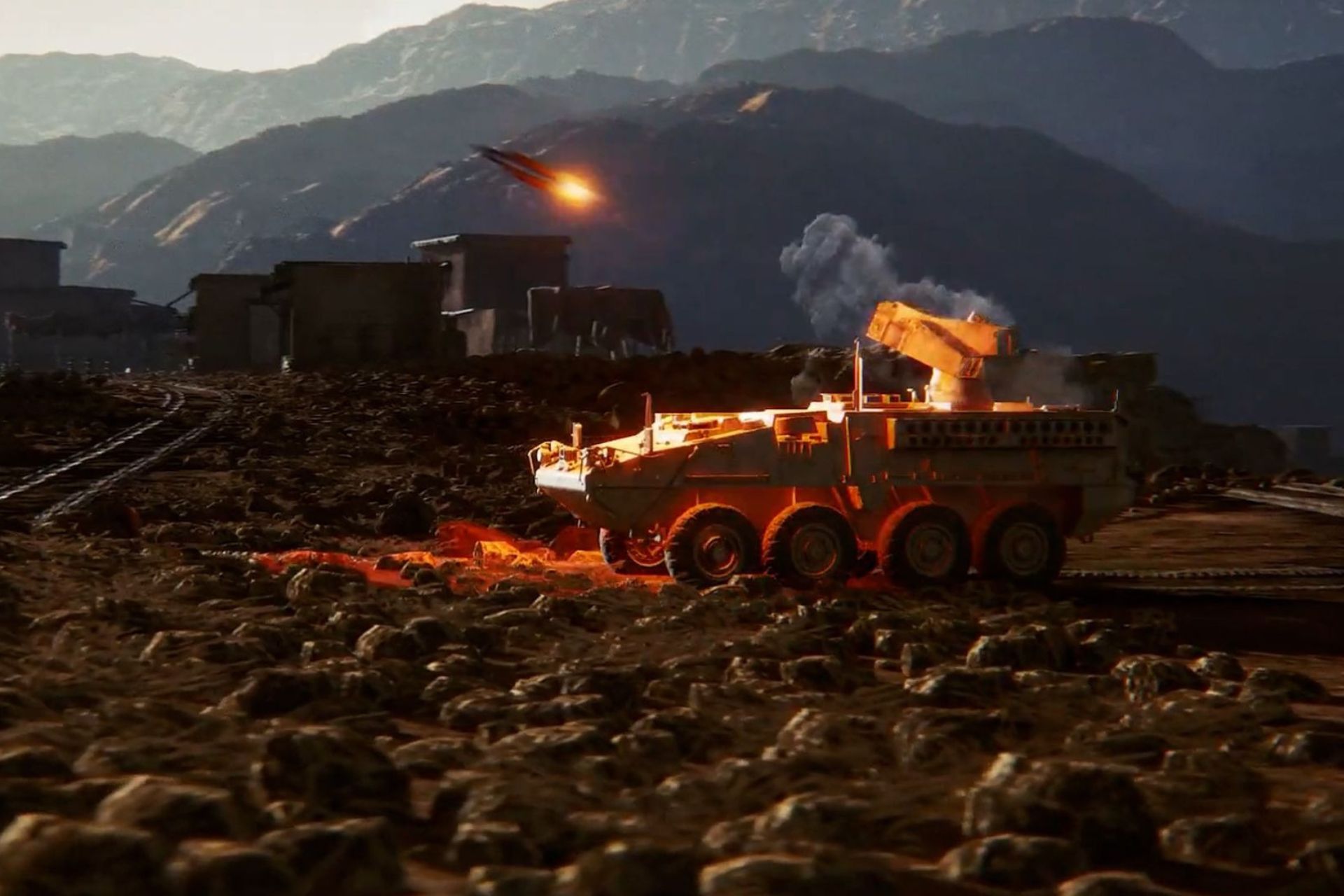BlueHalo: Anti-Drone Missiles to Fill Gaps in US Army’s Arsenal

{loadposition bannertop}
{loadposition sidebarpub}
On January 9, 2025, BlueHalo demonstrated its technological developments during the Desert Guardian 1.0 exercise organized by the US Central Command (CENTCOM) at Fort Drum, New York. This event highlighted the company’s advanced solutions to counter unmanned aerial system (UAS) threats, featuring integrated sensors and its VigilantHalo command and control (C2) platform. With the increasing proliferation of lightweight kamikaze drones, underscored by China’s recent order of nearly one million units to be delivered by 2026, BlueHalo’s technologies address the growing operational requirements of the U.S. Armed Forces.
Follow Army Recognition on Google News at this link
The FE-1, leveraging a modular design and largely based on previously developed technologies, has been selected by the U.S. Army as one of two primary solutions to bolster its counter-UAS capabilities (Picture source: BlueHalo )
During the exercise, VigilantHalo played a critical role by integrating data from multiple sensors and presenting it on a unified interface. This platform enhances decision-making, reduces cognitive load for operators, and enables rapid responses to threats, including those beyond the visual line of sight (BVLOS). Its modular design and secure architecture allow deployment in fixed installations, mobile units, or cloud environments, adapting to diverse missions ranging from air traffic control to counter-UAS operations in military and civilian contexts.
In addition to these demonstrations, BlueHalo introduced a suite of counter-drone (C-UAS) solutions, including the Freedom Eagle-1 (FE-1) missile. Specifically designed to address gaps in the U.S. Army’s current arsenal, the FE-1 targets Group 3 drones, which are larger than FPV or quadcopter drones but smaller than systems like the MQ-9 Reaper. Jimmy Jenkins, president of BlueHalo’s armed forces portfolio and a former U.S. Army air missile defender, emphasized that existing solutions are often ill-suited to these particular threats, sometimes requiring the use of costly missiles to neutralize relatively inexpensive drones. The FE-1 provides a more efficient alternative, with a range exceeding 20 kilometers and the capability to intercept targets at altitudes up to 10,000 feet. It operates using network data, eliminating the need for specific radar systems, and integrates seamlessly into existing infrastructures.
The FE-1, leveraging a modular design and largely based on previously developed technologies, has been selected by the U.S. Army as one of two primary solutions to bolster its counter-UAS capabilities. This decision aligns with broader efforts supported by the U.S. Congress, which allocated $20 million in the 2025 National Defense Authorization Act to accelerate research and development in this area. Jonathan Moneymaker, BlueHalo’s CEO, highlighted the importance of combining innovative approaches with existing technological investments to meet emerging threats effectively.
In addition to the FE-1, BlueHalo showcased other systems such as the LOCUST Directed Energy Laser Weapon System, which combines precision laser hardware with artificial intelligence to neutralize a variety of targets. The Titan-SV system offers autonomous radio-frequency (RF) detection and precise tracking of small UAS, while the Titan system is capable of detecting, tracking, and safely neutralizing drones without disrupting nearby communications or electronics. These solutions exemplify the company’s layered approach to safeguarding troops in demanding operational environments.
The Desert Guardian 1.0 exercise provided BlueHalo with an opportunity to test these technologies in real-world scenarios, while also facilitating collaboration with industry leaders and government agencies to anticipate future threats. Mary Clum, president of BlueHalo’s space and products portfolio, emphasized the company’s commitment to equipping military forces with the tools required to address unique challenges, particularly in critical regions under CENTCOM’s jurisdiction.
The Freedom Eagle-1 missile, in conjunction with systems like VigilantHalo, underscores BlueHalo’s ability to address urgent military needs for counter-UAS capabilities. By integrating proven technologies with cutting-edge innovations, the company positions itself as a key contributor to the protection of airspace and the evolving demands of modern battlefields.

{loadposition bannertop}
{loadposition sidebarpub}
On January 9, 2025, BlueHalo demonstrated its technological developments during the Desert Guardian 1.0 exercise organized by the US Central Command (CENTCOM) at Fort Drum, New York. This event highlighted the company’s advanced solutions to counter unmanned aerial system (UAS) threats, featuring integrated sensors and its VigilantHalo command and control (C2) platform. With the increasing proliferation of lightweight kamikaze drones, underscored by China’s recent order of nearly one million units to be delivered by 2026, BlueHalo’s technologies address the growing operational requirements of the U.S. Armed Forces.
The FE-1, leveraging a modular design and largely based on previously developed technologies, has been selected by the U.S. Army as one of two primary solutions to bolster its counter-UAS capabilities (Picture source: BlueHalo )
During the exercise, VigilantHalo played a critical role by integrating data from multiple sensors and presenting it on a unified interface. This platform enhances decision-making, reduces cognitive load for operators, and enables rapid responses to threats, including those beyond the visual line of sight (BVLOS). Its modular design and secure architecture allow deployment in fixed installations, mobile units, or cloud environments, adapting to diverse missions ranging from air traffic control to counter-UAS operations in military and civilian contexts.
In addition to these demonstrations, BlueHalo introduced a suite of counter-drone (C-UAS) solutions, including the Freedom Eagle-1 (FE-1) missile. Specifically designed to address gaps in the U.S. Army’s current arsenal, the FE-1 targets Group 3 drones, which are larger than FPV or quadcopter drones but smaller than systems like the MQ-9 Reaper. Jimmy Jenkins, president of BlueHalo’s armed forces portfolio and a former U.S. Army air missile defender, emphasized that existing solutions are often ill-suited to these particular threats, sometimes requiring the use of costly missiles to neutralize relatively inexpensive drones. The FE-1 provides a more efficient alternative, with a range exceeding 20 kilometers and the capability to intercept targets at altitudes up to 10,000 feet. It operates using network data, eliminating the need for specific radar systems, and integrates seamlessly into existing infrastructures.
The FE-1, leveraging a modular design and largely based on previously developed technologies, has been selected by the U.S. Army as one of two primary solutions to bolster its counter-UAS capabilities. This decision aligns with broader efforts supported by the U.S. Congress, which allocated $20 million in the 2025 National Defense Authorization Act to accelerate research and development in this area. Jonathan Moneymaker, BlueHalo’s CEO, highlighted the importance of combining innovative approaches with existing technological investments to meet emerging threats effectively.
In addition to the FE-1, BlueHalo showcased other systems such as the LOCUST Directed Energy Laser Weapon System, which combines precision laser hardware with artificial intelligence to neutralize a variety of targets. The Titan-SV system offers autonomous radio-frequency (RF) detection and precise tracking of small UAS, while the Titan system is capable of detecting, tracking, and safely neutralizing drones without disrupting nearby communications or electronics. These solutions exemplify the company’s layered approach to safeguarding troops in demanding operational environments.
The Desert Guardian 1.0 exercise provided BlueHalo with an opportunity to test these technologies in real-world scenarios, while also facilitating collaboration with industry leaders and government agencies to anticipate future threats. Mary Clum, president of BlueHalo’s space and products portfolio, emphasized the company’s commitment to equipping military forces with the tools required to address unique challenges, particularly in critical regions under CENTCOM’s jurisdiction.
The Freedom Eagle-1 missile, in conjunction with systems like VigilantHalo, underscores BlueHalo’s ability to address urgent military needs for counter-UAS capabilities. By integrating proven technologies with cutting-edge innovations, the company positions itself as a key contributor to the protection of airspace and the evolving demands of modern battlefields.




